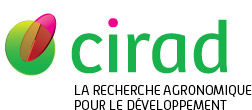Fréon Pierre, Durand Hermine, Avadi Tapia Angel Daniel, Huaranca Sayda, Orozco Moreyra Rita. 2017. Life cycle assessment of three Peruvian fishmeal plants: Toward a cleaner production. Journal of Cleaner Production, 145 : 50-63.
|
Version publiée
- Anglais
Accès réservé aux personnels Cirad Utilisation soumise à autorisation de l'auteur ou du Cirad. 1-s2.0-S0959652617300446-main.pdf Télécharger (2MB) | Demander une copie |
Quartile : Q1, Sujet : ENVIRONMENTAL SCIENCES / Quartile : Q1, Sujet : ENGINEERING, ENVIRONMENTAL / Quartile : Q1, Sujet : GREEN & SUSTAINABLE SCIENCE & TECHNOLOGY (Science)
Résumé : Fishmeal and fish oil are largely used as input to several animal feed industries all around the world, but there is a lack of life cycle assessments (LCAs) on Peruvian fishmeal plants, despite their predominance in the global supply. LCAs where performed on three different types of Peruvian fishmeal plants with the objective of comparing them and suggesting ways of limiting their impacts. The LCA results can be nested into LCAs of animal feed. Two system boundaries were used: one including the fishery and another excluding it in order to enable other practitioners to use our generic life cycle inventory (LCI) data and LCI analysis. The effects of different processing rates and qualities of fishmeal on environmental impacts were compared. We used the SimaPro software, the ecoinvent 2.2 database and the ReCiPe method. In contrast to many LCA studies, the construction and maintenance phases were considered. Despite the predominant impact of the use phase, in particular consumption of fossil energy, these two phases contribute significantly (>10% using the ReCiPe single score) when fishing is excluded from the system boundaries. Furthermore, existing screening LCAs of the use phase largely underestimate (∼20%) its environmental impacts. The environmental benefit of using natural gas instead of heavy fuel as energy source, in terms of reduced impacts, is huge, reaching 41% of the ReCiPe single score when fishing is excluded and 30% when included. The comparison of environmental impacts between different qualities of fishmeal shows higher impacts of residual fishmeal, intermediate impact of standard fishmeal and lower impacts of Prime fishmeal, the difference between extreme values being more than twofold. Future studies on other fishmeal and residual fishmeal plants should take into account the construction and maintenance phases, and more items in the use phase than in historical screenings. There is room to decrease the environmental impact of this industry in Peru.
Mots-clés géographiques Agrovoc : Pérou
Classification Agris : L02 - Alimentation animale
Q54 - Composition des aliments pour animaux
M12 - Production de l'aquaculture
Champ stratégique Cirad : Axe 1 (2014-2018) - Agriculture écologiquement intensive
Auteurs et affiliations
- Fréon Pierre, IRD (FRA)
- Durand Hermine, ENS (FRA)
-
Avadi Tapia Angel Daniel, CIRAD-PERSYST-UPR Recyclage et risque (FRA)
 ORCID: 0000-0002-8114-916X
ORCID: 0000-0002-8114-916X
- Huaranca Sayda, Universidad Nacional Agraria La Molina (PER)
- Orozco Moreyra Rita, IMARPE (PER)
Source : Cirad-Agritrop (https://agritrop.cirad.fr/583507/)
[ Page générée et mise en cache le 2025-09-23 ]




